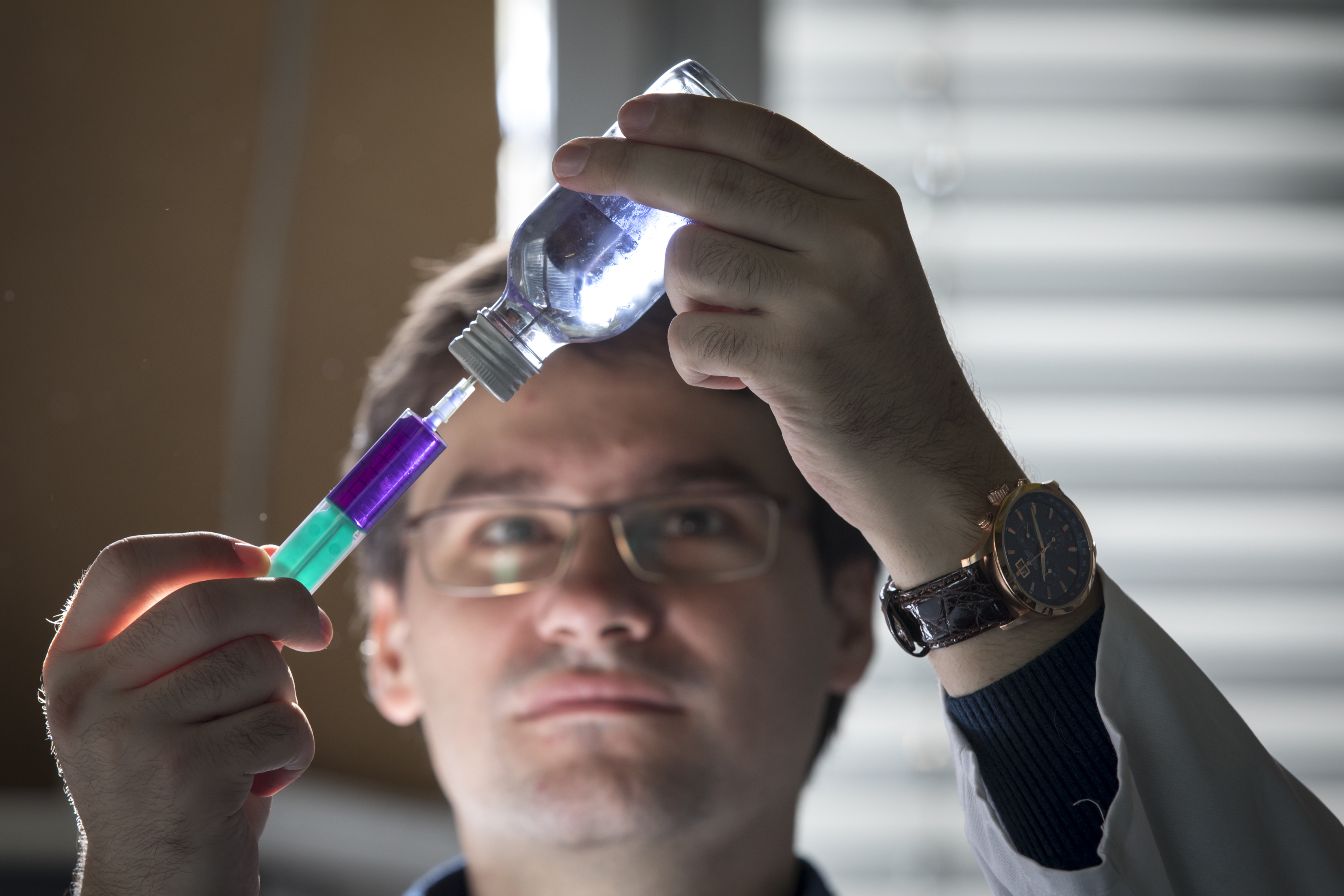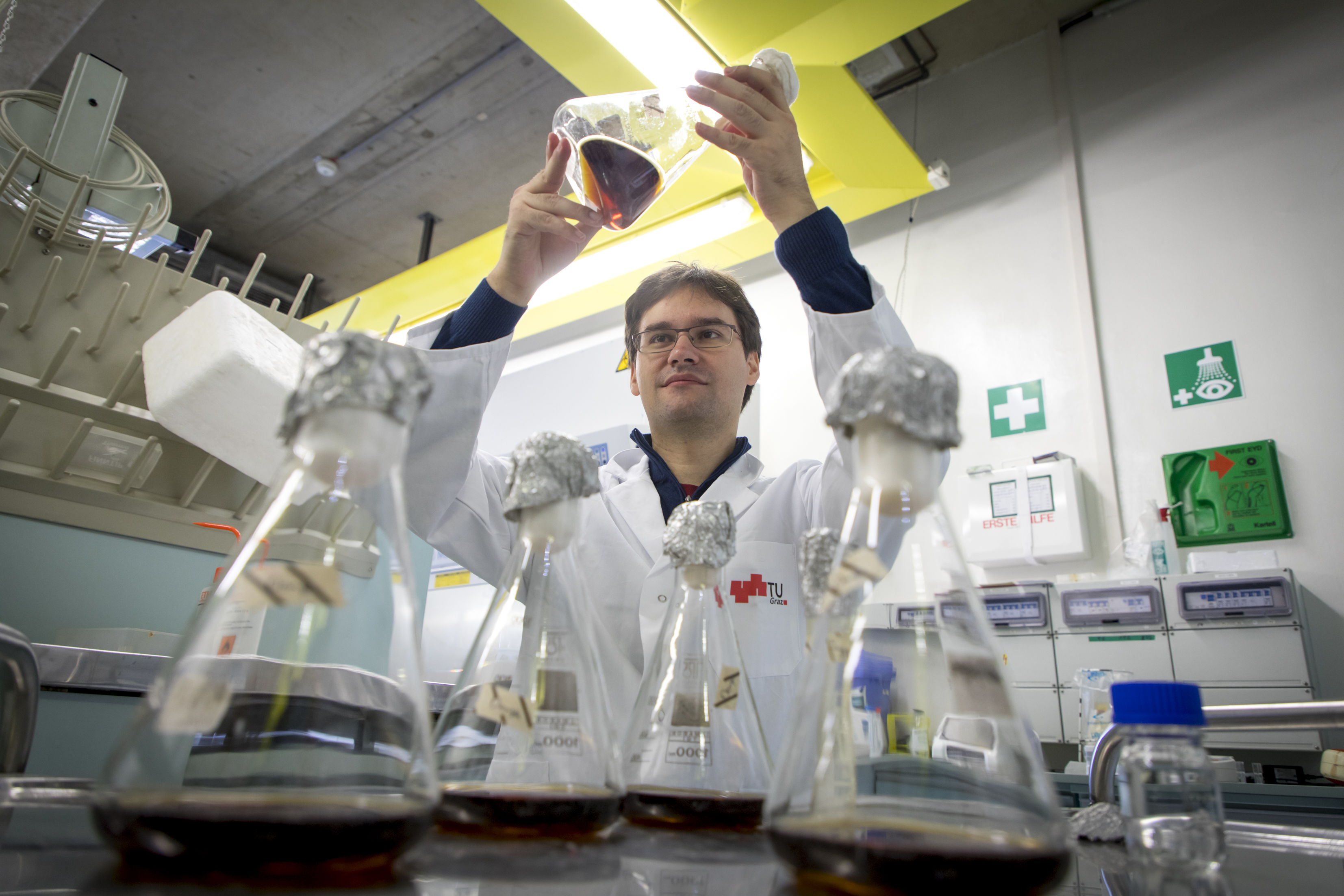Enzymes at work: breaking down stubborn cellulose

Oxidative enzymes
Typically, biorefineries use a mix of hydrolytically active enzymes which utilize water molecules to breakdown plant material – as happens in natural degradation processes. Recently, oxidative enzymes were discovered which utilize oxygen and work together with hydrolytic enzymes to break down cellulose more efficiently. But how exactly these oxidative enzymes – also known as LPMOs (lytic polysaccharide monooxygenases) – work, was not known. At this stage that the Graz scientists got to work.Enzymes under the scanning force microscope
Using atomic force microscopy, the researchers were able to observe enzymes at work on the surface of cellulose particles for the first time and provide direct evidence of their activity. For several years now, the Institute of Biotechnology and Biochemical Engineering has been working closely with the Graz Centre for Electron Microscopy. For the study currently published in Nature Communications, the hydrolytically active enzyme Trichoderma reesei CBH I, which has been known for a long time, was observed in a first step. The enzyme adsorbs on the surface of a particle, moves along a polysaccharide chain and step by step cleaves off more and more small parts. In a further step, it has been observed how the behaviour of the enzymes changes when LPMOs are added to the mix. And here the researchers could establish both that the LPMOs generated more binding sites on the surface for the hydrolytically active enzymes, and that the enzyme dynamics on the surface increased considerably.A picture is worth a thousand words
This study will contribute to a better understanding of these processes at a basic research level, and in a further step will facilitate the production of biofuels. Usually, in chemistry we are focused on soluble products, which can be easily measured, to deepen the understanding of a reaction. However, for a reaction taking place on a solid surface such an approach is not feasible. We wanted to observe and document the step before that, that is, the process of cellulose breakdown,” says Manuel Eibinger, lead author of the study at the Institute of Biotechnology and Biochemical Engineering. Bernd Nidetzky, head of the Institute of Biotechnology and Biochemical Engineering at TU Graz: “The saying comes to mind ‘a picture is worth a thousand words’. In this study we wanted to document the processes as they occur in time. And this is what we managed to do.”
Kontakt
Univ.-Prof.Dipl.-Ing. Dr.techn.
Institute of Biotechnology and Biochemical Engineering
Phone: +43 316 873 8400
Email: <link int-link-mail window for sending>bernd.nidetzky@tugraz.at
<link http: www.biote.tugraz.at _blank int-link-external external link in new>www.biote.tugraz.at
Manuel EIBINGER
Dipl.-Ing. Dr.techn. BSc
Institute of Biotechnology and Biochemical Engineering
Phone: +43 316 873 8409
Email: <link int-link-mail window for sending>m.eibinger@tugraz.at
<link http: www.biote.tugraz.at _blank int-link-external external link in new>www.biote.tugraz.at





